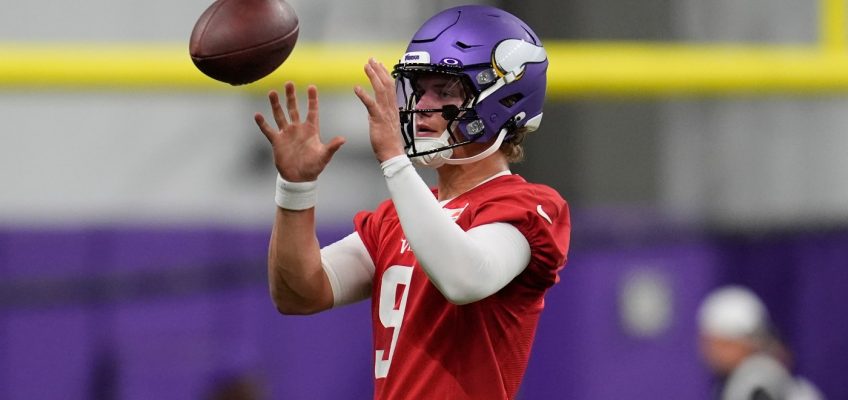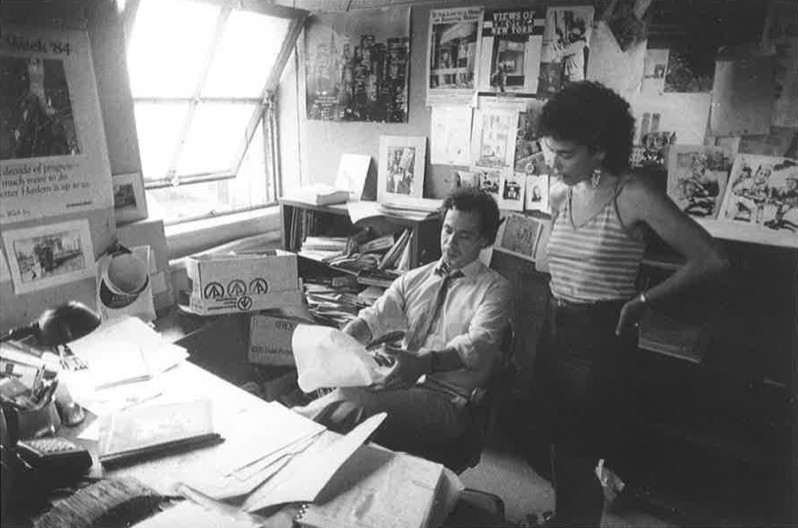The hype surrounding J.J. McCarthy was palpable on Wednesday afternoon at TCO Performance Center.
It marked the first time since suffering a torn meniscus last summer that the 22-year-old quarterback was on full display for the Vikings in the flow of the offense.
All eyes were on him.
So imagine what McCarthy must have been feeling when the first pass he threw during 7-on-7 drills was intercepted. After dropping back to pass and going through his progression, McCarthy uncorked a pass to Justin Jefferson over the middle. The ball was tipped in the air and picked off by Ivan Pace Jr.
The response from McCarthy was what proved he’s ready to take over as the starting quarterback of the Vikings. Though he easily could’ve let that mistake derail him for the rest of the practice, he took it in stride and put together a very impressive performance.
“Everyone wants to be perfect,” McCarthy said. “Especially at the quarterback position.”
In that same breath, McCarthy provided a peek into his psyche, displaying a level of maturity that helps explain how he was able to bounce back so quickly in real time.
“The more you try to be perfect is going to kill you more than your imperfections will,” McCarthy said. “It’s OK to go out there and take risks.”
That’s exactly how Kevin O’Connell wants the Vikings to approach organized team activities. He refers to it as the “learning phase” for a reason. He wants his players to be comfortable being uncomfortable.
What are some of the ways McCarthy has gone about doing that?
“Just anticipatory throws and trying to fit it into a tight spot,” McCarthy said. “Not being afraid to fail out here.”
That mindset has actually put McCarthy in a position to succeed. He attacked the recovery process with a sense of fearlessness as he worked his way back from a torn meniscus. That has allowed him to pick up right where he left off now that he’s back on the field with his teammates.
“There’s been a lot of lonely hours where it’s him and the training staff and the strength staff,” O’Connell said. “He looks great, and he’s feeling really good.”
The next step for McCarthy is continuing to progress. As much work as he was able to learn from afar last season, he still has a lot more to learn as he steps into the spotlight as the man under center this season.
“We can’t assume that he knows any particular thing just based upon the meeting room,” O’Connell said. “We’ve got to come out here and organically feel where he’s at.”
A big part of that has been seeing how McCarthy looks in 7-on-7 drills when he’s dropping back to pass and going through his progression.
“You can really get a feel for, ‘Is a guy reading with his feet? Is he taking the right drop? Is his base and body and balance positioned to the throws and sequence of the drop in the proper place?’” O’Connell said. “You can kind of coach backwards from the ending of the play.”
Sometimes that means getting together after an interception and discussing with him what needs to be better. Sometimes that means getting together after a completion and praising him for a job well done.
“Never satisfied on any particular outcome,” O’Connell said. “We’re building towards something much greater than just a single play here or there.”
As for McCarthy, he made it clear that he’s going to continue to carry himself with confidence, regardless of if he throws an interception or a touchdown pass.
“Not letting that carry over,” McCarthy said. “You learn from it, emotionally detach from that outcome, and keep just moving.”
Minnesota Vikings head coach talks with quarterbacks J.J. McCarthy (9) Max Brosmer (12), Brett Rypien (11) and Sam Howell (8) during an NFL football team practice Wednesday, May 28, 2025, in Eagan, Minn. (AP Photo/Abbie Parr)
Related Articles
Five storylines to keep an eye on as the Vikings start OTAs
NFL teams can keep using the tush push after ban proposal fails at owners meetings
NFL owners unanimously approve player participation in Olympic flag football for 2028
NFL owners set to discuss tush push again, along with playoff seeding
How the Vikings convinced fans to get tattoos for their schedule release




